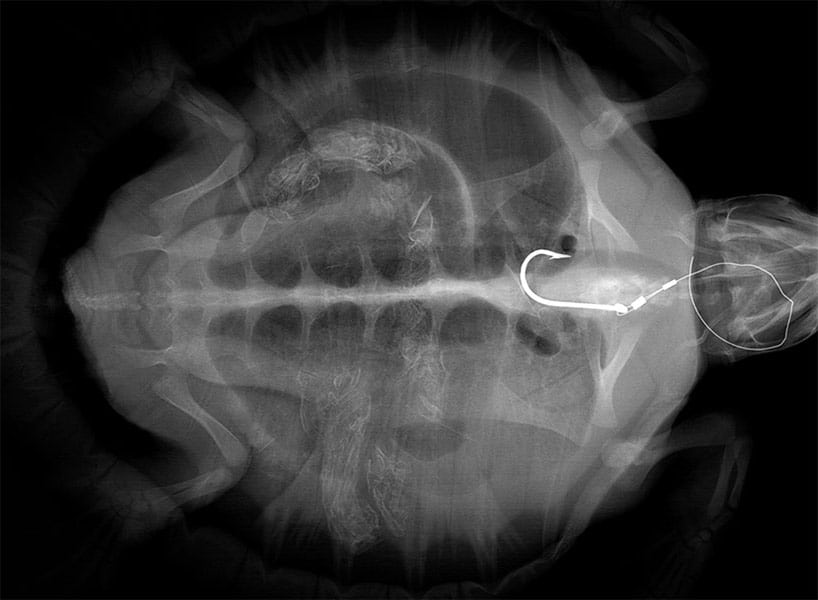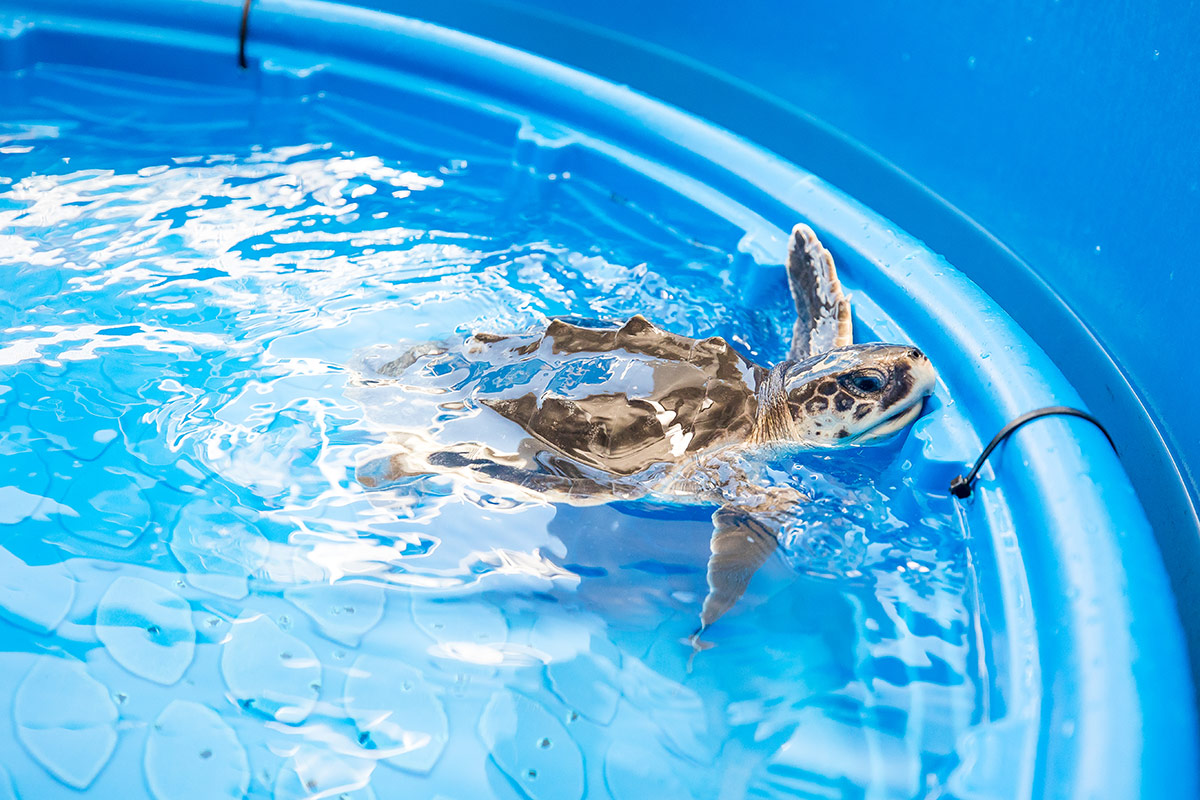Practicing the use of safer fishing hooks and proper disposal of fishing gear are a few ways you can help make a big difference!
Fishing can be a great way to spend a summer day; however, it’s important to remove all debris and waste left over from any fishing trip to ensure it doesn’t end up as potentially harmful marine debris. Swallowing a fishing hook or getting caught in fishing line can be harmful, and in some cases life threatening to many different species of marine life including sea turtles, dolphins, stingrays, whales, manatees and birds.

Utilizing circle hooks as your go-to fishing gear can provide an extra layer of protection in the event an undesired marine animal is hooked. Cleaning up monofilament fishing line and disposing of it when back at the dock is another great way to decrease the chances of animal entanglement.
Sea Turtles Get Caught on Fishing Gear
On May 6, 2017, a local angler accidentally caught a small, juvenile Kemp’s ridley sea turtle (named Oat Bran) at Pier 60 in Clearwater Beach, FL. He had been using squid as bait which may have attracted Oat Bran to bite and swallow the fishing hook. The concerned angler contacted Clearwater Marine Aquarium, and rescue personnel recovered the turtle and then transported it back to the aquarium for triage. Due to the placement of the barbed surfaced of the hook within the esophagus (the tube that connects the mouth to the stomach) the hook required surgical removal. Oat Bran was fortunate to be rescued, but many other marine animals are not so lucky after being caught on fishing gear.

Barbless Circle Hooks Are Safer for Marine Life
Using a barbless, circular hook is one way to ensure a safer fishing experience if a hook is swallowed by marine life. When “J” hooks with prominent barbs are swallowed, they can can cause extensive and sometimes lethal damage to an animal’s esophagus and GI (gastrointestinal ) tract. The small-barbed circle hooks; however, can help decrease the chance of these injuries. It is even possible to make these hooks yourself by crimping the barb. These barbless and small-barbed, circle hooks are effective in catching desired fish and are a great way to do your part in reducing injuries due to accidental by-catch.
Disposal of Hooks and Monofilament
Proper disposal of hooks and different types of fishing line are crucial to preventing injury to marine life. Monofilament fishing line is very dangerous for turtles, especially fishing line that remains in the ocean and isn’t disposed of properly. Turtles can get tangled in the line, causing flipper amputations, or they can swallow the line causing digestive problems.
Two separate sea turtles were recently rescued after being found entangled in monofilament fishing line. Both Urkel-O’s and Zo had entanglement around their flippers that was so severely damaging that amputation was required. This could have easily been prevented by properly disposing the fishing line.

There are recycling bins located on many boat ramps and piers, specifically for monofilament, or single strand fishing line. While you cannot put non-monofilament line or hooks in these recycling bins, there are ways to properly dispose of these as well. According to the FWC non-monofilament fishing line should be cut into pieces 12 inches or smaller and hooks should have the sharp point cut off, then both should be put into a covered trash can. If the trash can isn’t covered, the debris can still blow out and endanger marine life. You can learn more about monofilament disposal programs at myfwc.com.
Responsible Pier Initiative
Clearwater Marine Aquarium has also partnered with Loggerhead Marinelife Center to join the grant-funded Responsible Pier Initiative. The goal of this program is to improve awareness of marine life on fishing piers, provide proper signage & animal retrieval equipment for local piers, and reduce human waste in pier environments (primarily fishing line).


Other Safe Fishing Tips
- Never leave your fishing gear unattended
- Inspect your gear frequently to make sure there are no unwanted breaks in the line
- If you notice sea turtles or other marine life interested in your bait, choose a new fishing area
- Never try to feed sea turtles if they approach you
Read more fishing tips from NOAA and FWC to help protect marine life. All marine turtle footage taken in Florida was obtained with the approval of the U.S. Fish and Wildlife Service and the Florida Fish and Wildlife Conservation Commission (FWC) under conditions not harmful to marine turtles. Footage was acquired while conducting authorized conservation activities pursuant to FWC MTP-17-172.